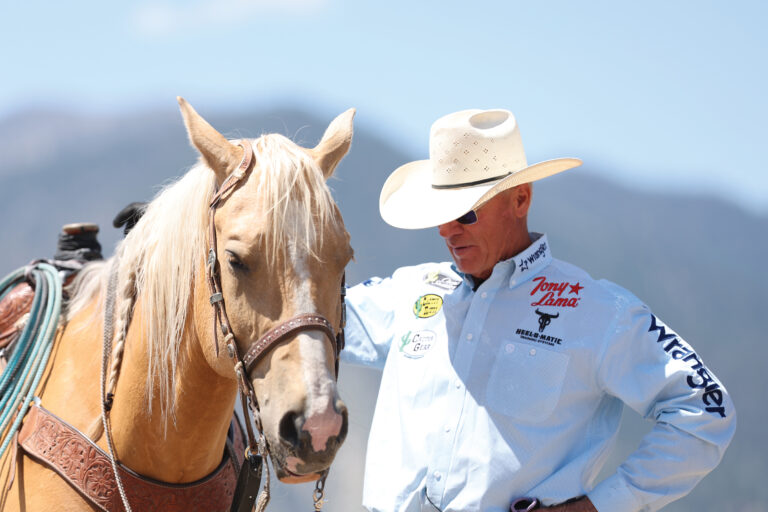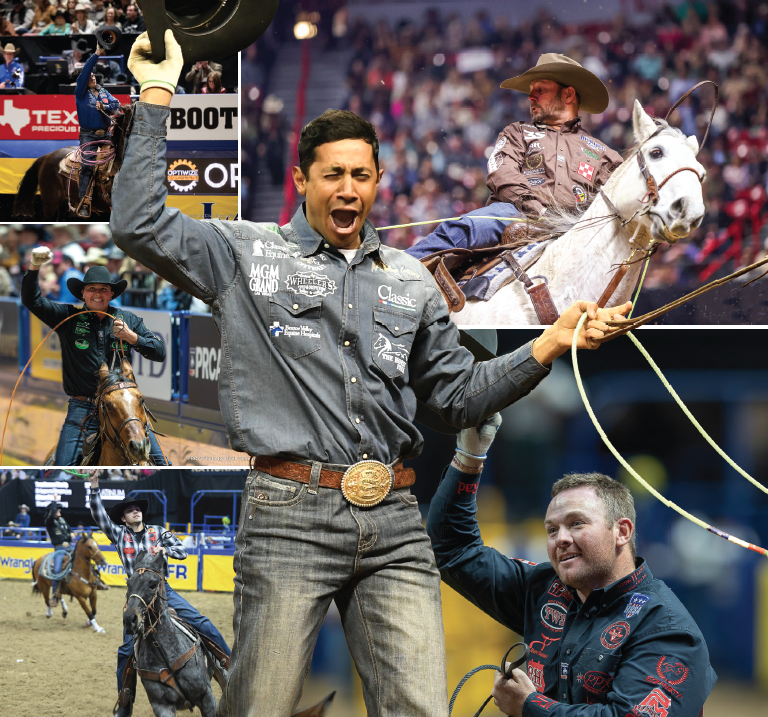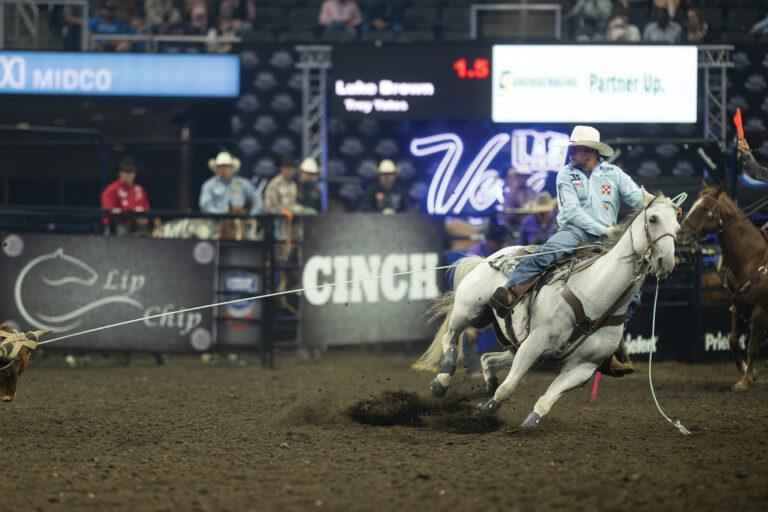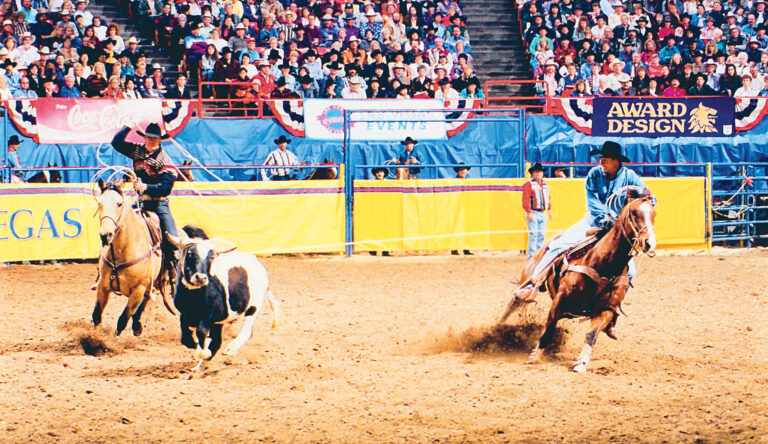The day we shot these photos, I was riding green head horses all day, and we were roping some easy muleys to help build these young horses’ confidence. Ryan Motes was getting ready for the rope horse futurity in Fort Worth, so we were really focusing on making controlled runs that felt easy and helped our horses feel comfortable in their position and fundamentals.
1. Use a scoring lane

We’re using a score lane here, and it’s got three hurdles the steers have to go over before they can run. I like the scoring lane for both young and old horses. The majority of box problems come from two main causes: 1) Horses that want to be over-achievers and want to run to catch the cow. 2) Rodeo and jackpot horses that have to go off the back of the box hard, time and time again.
2. Getting hooked

The lane allows me to take all the sting out of the box as they wait for the steer to trickle out of the lane. If a horse is anticipating the gate, the cow has to go over all three of the hurdles, which gives me time to leak off the back, walk-start, then lope, all by the time the steer hits the end of the lane. I’ll start them at a walk, and I’m right beside the chute when I open it, he sees the cow and I’m in the range of being in position and hooked up with the cow. I can see them out to where I have to gain, go all the way down the arena, and, eventually on the slow steers, I can see them all the way to the end of the lane. Then I can teach them to go to them. You can turn a horse up in three runs. Getting them to leave controlled and calm is much harder.
3. Rope muleys

We rope a lot of muleys because they’re a little lighter and smaller so, on young head horses or green head horses, very seldom do I get them afraid of the weight of the steer. I can shape them and keep them confident. They’re usually decently fresh, and we never rope them where they start dragging. Our head horses don’t have to take any bad hits, so their confidence in their strength stays up.
4. Staying careful

The muleys will keep their own forward momentum. If you’re not careful, if your horses take bad hits, they’ll beat you to take the weight and they’ll load onto their front ends. They’ll stay true running to the steer but, then as your dallying, they’ll know the weight is coming to the saddle horn, and they’ll be afraid of feeling weak. They’ll dump their shoulders to the left, kick their butts under the rope and dig on their front ends. When they do that, the pull is a lie for a heeler, and those steers will give a read through the turn and they’ll rabbit hop or double hop as your heeler is picking up his timing. Your heeler will get beat to the ground and miss, and it fouls up the rhythm of the run instead of having them tapped and roping on the second or third jump.
5. Patient into the turn

When I’m roping these muleys to build my horse’s confidence, I’ll make sure my horse goes to the spot where I want to throw, I’ll take a couple extra swings and rope. I want to make sure he’s caught up, with his legs under him to where, after I rope, it’s easy to push him into the turn. I want to be patient into the turn and, after the turn, it’s really important to teach these horses to pull and keep control of the cow. The muleys generally make that job pretty easy on me and the horse, so I can focus on shaping him how I want him across the pen. That lets my heeler work, even if I am slow in the turn. Once I take control, he can sure enough work his horse. TRJ
WATCH ON ROPING.COM: Green Horse Confidence-Building Practice on Muleys
Year of the Horse coverage brought to you by Fast Back Ropes.









